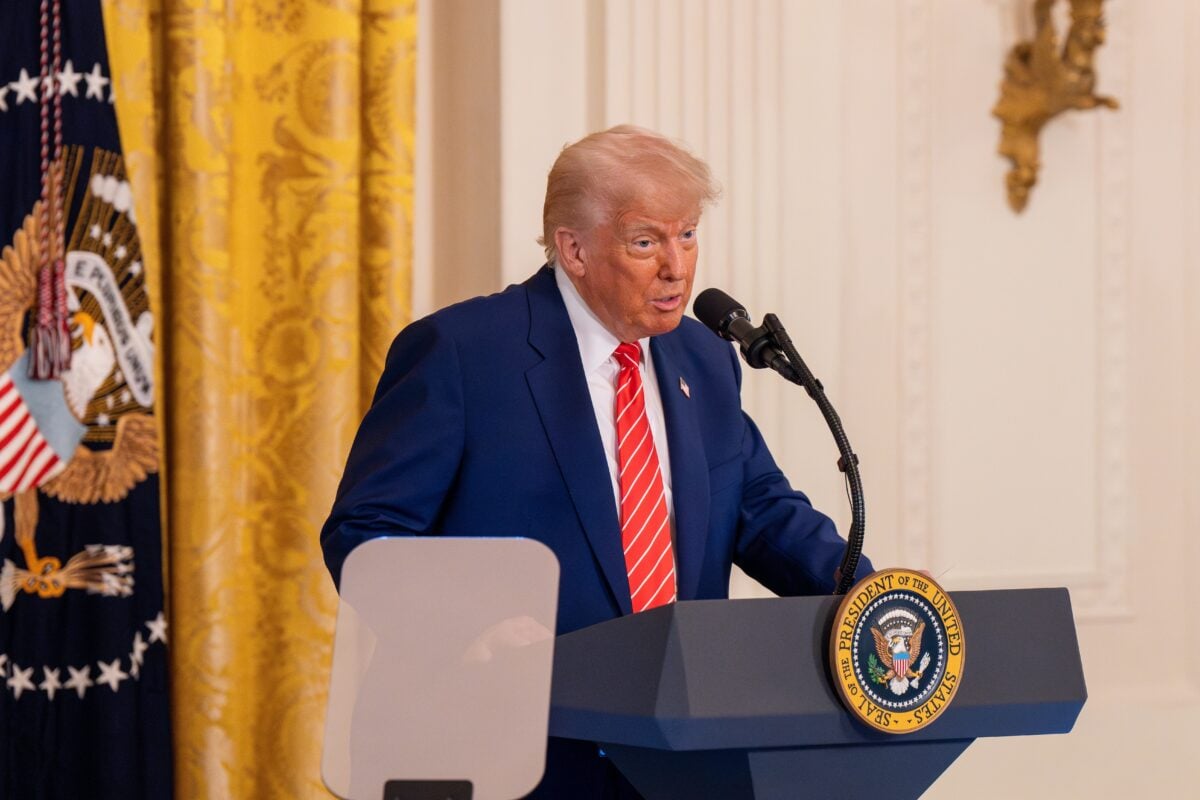TLDR
- Trump’s tariff changes cause predictable market drops and rebounds.
- AI partnerships like OpenAI-AMD trigger hype-driven stock surges.
- Speculation in tech giants risks inflating asset prices without growth.
- Tariff policies and AI deals lead to market swings detached from value.
U.S. President Donald Trump’s tariff announcements have long been a source of market volatility. These policy changes often lead to sharp stock market fluctuations, particularly in sectors like cryptocurrency. Similar patterns have been observed in the tech and AI industries, where major deals prompt quick surges and equally rapid pullbacks in stock prices. These movements resemble pump-and-dump schemes, where speculative sentiment overrides long-term value considerations.
Tariff Announcements and Their Market Effects
Donald Trump’s tariff policy has had a predictable impact on global markets. When the U.S. administration escalates or reverses tariffs, particularly those targeting major trade partners like China, investor sentiment tends to fluctuate dramatically. Initially, stock markets see declines, often fueled by uncertainty. However, once negotiations resume or tariff positions soften, a rebound follows.
This cyclical pattern is also evident in cryptocurrency markets, where tariffs have triggered massive sell-offs followed by recoveries. For instance, recent tariff announcements led to a $19 billion wipeout in leveraged crypto positions in a single day. The speed of these movements highlights how quickly market sentiment can turn, often driven by news rather than fundamentals.
AI and Tech Stocks React to Deal Announcements
In recent years, similar patterns of volatility have emerged in the tech and AI sectors, especially following major partnership announcements. A notable example occurred earlier this month when OpenAI and AMD entered into a deal involving computing capacity and stock options. The announcement caused AMD’s stock to surge by 38%, only for it to cool off shortly afterward.
The initial excitement was driven by speculation about the potential of the deal, but analysts soon pointed out that the arrangement may not immediately boost AMD’s profits. Similarly, Nvidia’s recent $5 billion partnership with Intel saw a significant spike in Intel’s stock price, rising 23% on the news. However, as investors digested the details, they realized that the deal might not lead to immediate financial benefits, and Intel’s stock subsequently fell.
These rapid stock fluctuations mimic the behaviors seen in speculative markets, where the initial hype drives up prices before reality sets in, leading to sharp pullbacks. These dynamics suggest that much of the growth in AI and tech stocks may be driven by short-term excitement rather than solid financial improvements.
Speculative Cycles in a Closed System
A distinct feature of the current market dynamics in AI and tech is the concentration of speculative capital within a small group of companies. Major players like OpenAI, AMD, Nvidia, and Intel dominate the space, and their deals can move markets substantially. However, much of this activity recycles money within the same ecosystem, creating an illusion of expansion.
Rather than driving genuine growth, these transactions inflate the values of these companies without creating new, tangible economic value. This behavior leads to an environment where asset prices rise due to speculation and hype rather than real progress or innovation. As more investors chase these momentum-driven moves, the risk of creating a bubble increases, especially as more deals are announced in quick succession.
The Risk of Market Disconnect
The repeated market reactions to news, whether it’s a tariff shift or a new AI deal, suggest that asset prices in these sectors could become increasingly disconnected from actual economic fundamentals. As speculative cycles dominate, only a small group of companies can influence market movements, which may create the conditions for a financial bubble.
Should these headline-driven cycles continue, there is a growing concern that asset valuations could inflate beyond what is supported by actual business performance. The result could be a cycle of rising prices driven by optimism and hype, rather than sound economic growth. If the underlying deals underperform, the entire system may face a sudden correction.





